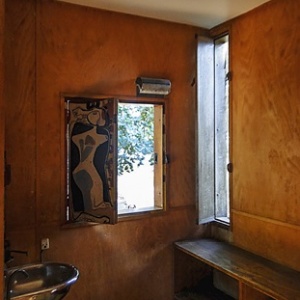Le Cabanon
An account of the first visit to a man’s inner nature.
DOI:
https://doi.org/10.35305/23626097v5i8.101Keywords:
Le Corbusier, Le Cabanon, minimum dwelling, Mediterranean landscape, intimate architectureAbstract
This is an account of our experience while attending the 3rd International Architecture Workshop 2017 held in France: Tourisme et patrimoine. Le territoire de Roquebrune-Cap Martin. We could have access to a variety of heritage value works among which Le Cabanon becomes the focus of this article not as an objective description of a project topic but as a personal and intimate view of the work. This implies the idea of a simple dwelling which synthesizes and reveals -with natural modesty- all the concepts of the master. Le Cabanon was Le Corbusier’s place of refuge and rest; it is located in the Mediterranean landscape which, in turn, influenced him so deeply. The account is enriched by the view of architect María Salerno who was the organizer and host of the workshop. This article does not aim at providing an accurate definition of the meaning and features of Le Cabanon; rather, it seeks to share the feelings conveyed by the intimate architecture of a private space tailored for one of the most influential architects of all times.
Downloads
Metrics

Downloads
Published
How to Cite
Issue
Section
License
Open access policy
A&P Continuidad is a non-profit and open access publication. According to Mexico Declaration on Cultural Policies, the journal distribution is submitted to Creative Commons Attribution-Noncommercial-ShareAlike 4.0 International Public License (CC BY-NC-SA). “Neither the commercial use of the original work nor that of the possible derivative works are allowed. The distribution of derivative works should be submitted to the license regulating the original work. This license is not free.”
A&P Continuidad authorizes the partial or full reproduction of texts and graphs provided that the source is cited. Authors are exclusively responsible for the criteria expressed in the articles which do not necessarily reflect the opinion of the Editorial Committee or that of the Direction Board. The copyright of the published articles pertains to their authors or publishers.
Transfer of rights
The acceptance of an article to be published implies the author’s transfer of rights to the journal. Authors continue to have the right to use the material in future books or publications, approve or veto the republication of their works as well as the rights related to patents or other rights. Transfer of rights form may be downloaded here.























 This OJS site and its metadata are under a
This OJS site and its metadata are under a 

